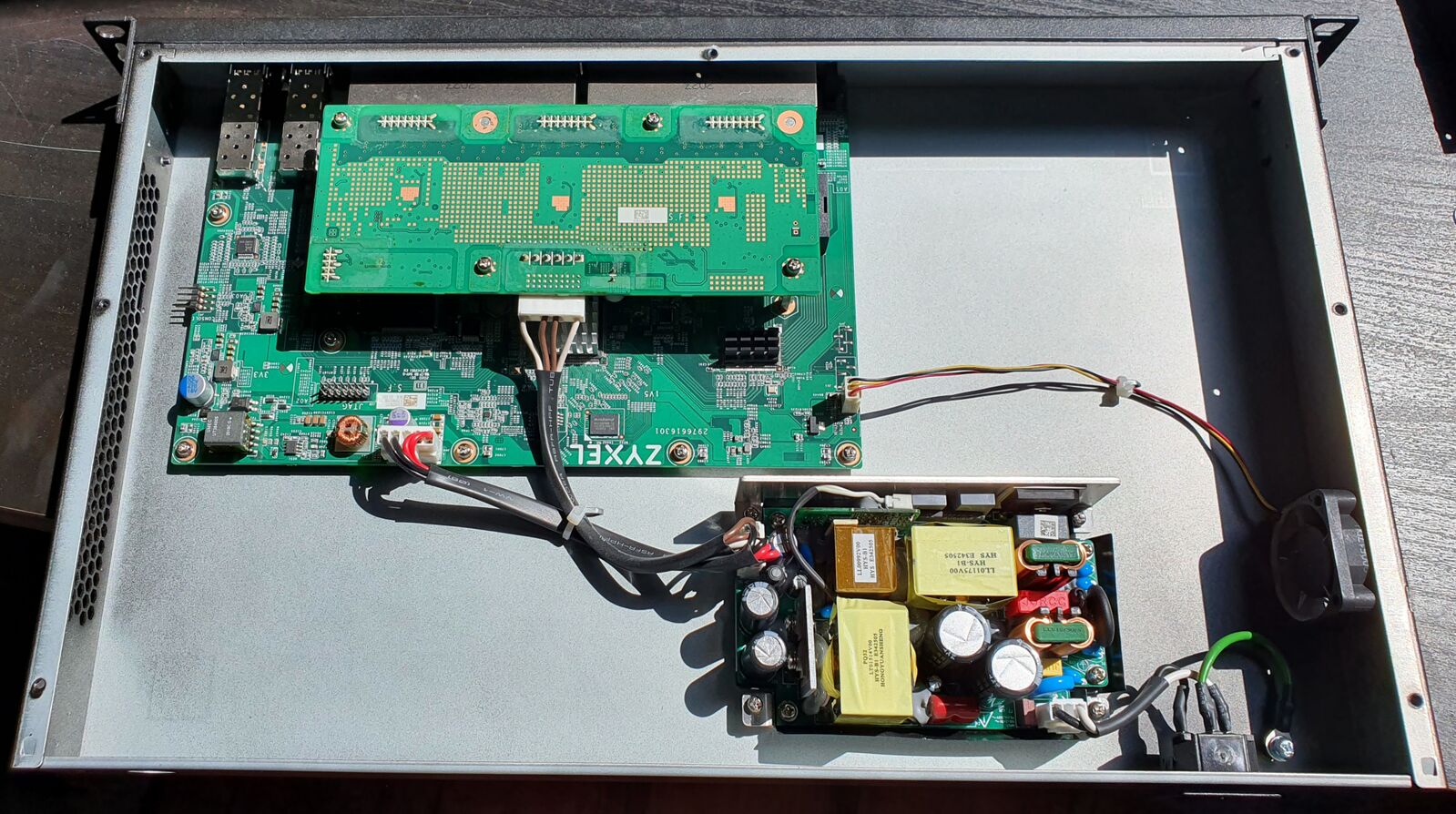For the link I provided, they say the chipset is BCM53346 would that make sense for 24x1G + 4x10G
True, but Realtek also makes a similar chipset too that has this same port count.
I found a similar RTL-based PoE device with 2 plain SFPs (non +) on AX.
I found this: http://www.poeplus.com/?s=S3024P-4SE for $225 which is a good deal. Our L2 smart web managed Switch is RTL based(RTL9301, PSE chip HS104PTI and HS104PBI)
I know the RTL9301 someone mentioned would be fairly easy to support, but is the PSE chip HS104PTI and HS104PBI for PoE supported in OpenWRT?
What about the 10G SFP+ cages? I saw that those weren't yet supported.
It was Alibaba, not AX 
as usual, exact chipset isn't specified, all the devices below claim to use Realtek.
Depends on what kind of challenge you're looking for of course, but personally I'd buy whatever extra the ZyXEL GS1900-24HPv2 is if I were in the market for something like that. Supported in master, having a pre-soldered console header accessible without opening the case, manufactured with some quality control, and available from local stores. To me, each of those things are worth a lot.
I was only answering the question, I have no intention of going down that rabbit hole myself 
I am definitely not looking for a challenge. Do most of these switches require header / console access to load the openWRT image? I was hoping to just be able to login to the default web gui, and upload a file. Are there any switches that support this method?
When you say pre-soldered console header accessible without opening the case, what do you mean by this? Like does it have a console port like you see on enterprise grade switches, or how do you access this without opening the case? I looked at the pictures, and don't see anything noticeable.
from commit message
- UART: 1 serial header (J41) with populated standard pin connector on
the left edge of the PCB, angled towards the side.
The casing has a rectangular cutout on the side that provides
external access to these pins.
Pinout (front to back):
+ GND
+ TX
+ RX
+ VCC
Ah I have never dealt with UART, only regular serial console cable like on a Cisco or Juniper switch. What is the primary difference?
you usually get the pre OS, boot loader access.
The only difference is the voltage. There is no RS232 level shifter here. You connect directly to 3.3V TTL IO pins. But that's one important difference to be aware of....
Never connect a regular RS232 port to a TTL header. Use a USB TTL UART cable.
Exactly. Or rather this one, since we were talking specifically about the 24HPv2: https://wikidevi.wi-cat.ru/File:GS1900-24HPv2-Console-header.jpg
Hah! I was wondering about the "front to back" in the commit message, thinking "Where is 'front' on a vertical connector?", thinking, you meant "board-side".
I had looked for a openwrt wiki page for the 24HPv2, but didn't find one, and assumed, the header was in the same orientation.
Yes, but it's still not very well tested. Which is why you might want to have simple access to console as a security net. You can always gamble that you won't need it, and delay buying a cable until it is necessary.
I have verified that installation from OEM works on the ZyXEL GS1900-10HP and the Netgear GS108Tv3. I am pretty sure the same method should work with any of the ZyXEL switches at least. The trick is to flash the OpenWrt initramfs image from the OEM web GUI, and then sysupgrade OpenWrt after booting from the initramfs.
Do not try to flash the sysupgrade image directly from the OEM web GUI. The OEM flasher will silently corrupt the image, leaving you with a soft brick. And then you need console - which will allow this to be easily fixed.
The ZyXEL sysupgrade images are supposed to be made so that they are rejected by the OEM firmware but don't trust this. It's not like that for other brands like the Netgear. They will accept and corrupt sysupgrade images.
So always do the two-step first time installation on the realtek switches. initramfs from OEM first, and then sysupgrade from OpenWrt.
But there is currently a bug in the image creation code for the ZyXELs, so installing from OEM web GUI is broken. This is fixed by https://patchwork.ozlabs.org/project/openwrt/patch/20210624210408.19248-1-bjorn@mork.no/ which ahs been stuck in patchworks for a while. Don't know why.
I have a GS308T, flashed a few weeks ago without serial, unopened.
Install must have worked painlessly on first try with whatever instructions for the 2-step-maneuver were on the Openwrt wiki at the time for that device (family?), because I don't remember details.
I am now wondering, what will happen if I flash a PoE switch with a supported Realtek chipset, but an unsupported poe chipset? Will POE still work and function, but we just won't have any control or reporting until added?
If it's built internally like this one

You could perhaps try running the switch with the POE disconnnected if you fear damage, or malfunction.
Personally though, my first intuition would be following default behaviour: No passive POE by default, unless port specifically marked as such. Active POE (= after negotiation) by default enabled on all supplied ports.
But I would still test that, before I hookup something valuable. 
